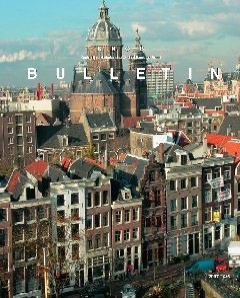Indexering ESCI / Scopus


Architectuurgeschiedenis en bouwhistorie in Amsterdam
(Freek Schmidt). Dik de Roon: Gedragen door water. Drijvende kelders in Amsterdam en omstreken. Coert Peter Krabbe en Jos Smit: Doeltreffende schoonheid. Adriaan Willem Weissman en Lizzy Cottage (1901-1904). Gabri van Tussenbroek: De Schreierstoren van binnen en van buiten Een van de laatste restanten van de Amsterdamse stadsommuring bouwhistorisch onderzocht. Ronald Glaudemans: 'Koopmansrenaissance'. Het Amsterdamse woonhuisinterieur in de zestiende eeuw.
A floating cellar is a brickwork basin that can be moved up and down with the groundwater level. It is a relatively unknown phenomenon with a history in which all sorts of fascinating questions are intermingled. Besides dealing with the water, technical conditions in the field of making mortar, brickwork and pumping, the final fixing of the floating cellar basins and the problems of protection are ingredients for a closer look at the phenomenon.
In the sixteenth and seventeenth centuries Amsterdam went through a few impressive growing pains resulting, among other things, in the...
In 1892 Adriaan Willem Weissman (1858-1923) designed the Stedelijk Museum at Paulus Potterstraat in Amsterdam. Hardly ten years later he built the detached town house with picture gallery 'LizzyCottage', at the corner of Hobbemastraat and Jan Luijkenstraat. In this short period of time his architecture went through fundamental changes: whereas the main form of the museum was based on Dutch architecture of the early seventeenth century, the appearance of Lizzy Cottage is considerably less historicizing.
In the last decade of the nineteenth century the work of colleague-architects....
Schreierstoren is one of the few remains of the late-medieval encircling walls of Amsterdam. Moreover, it is the only tower that was not provided with a spire in the early seventeenth century, as happened to the towers Montelbaanstoren and Munttoren. That is why Schreierstoren is still more or less in its original state. During major repairs to the exterior walls in the autumn and winter of 2005 there was the possibility for a building-historical research of the inside and outside of the tower. A horizontal joint in the brickwork indicates an interruption in the construction of the...
In the build-up to the Golden Age Amsterdam already experienced great flourishing and prosperity during the sixteenth century. Within the boundaries of the late-medieval centre many houses were renovated or enlarged and the greater part of the grounds at the rear were built up with smaller dwellings for the many immigrants. Among them were a lot of merchants from the north of Germany and Flanders, who were apparently influenced by their country of origin in the interiors and finishing of their houses.
The relatively scarce remains of sixteenth-century interior finishings in...


open access mogelijk gemaakt door Stichting OpenAccess
